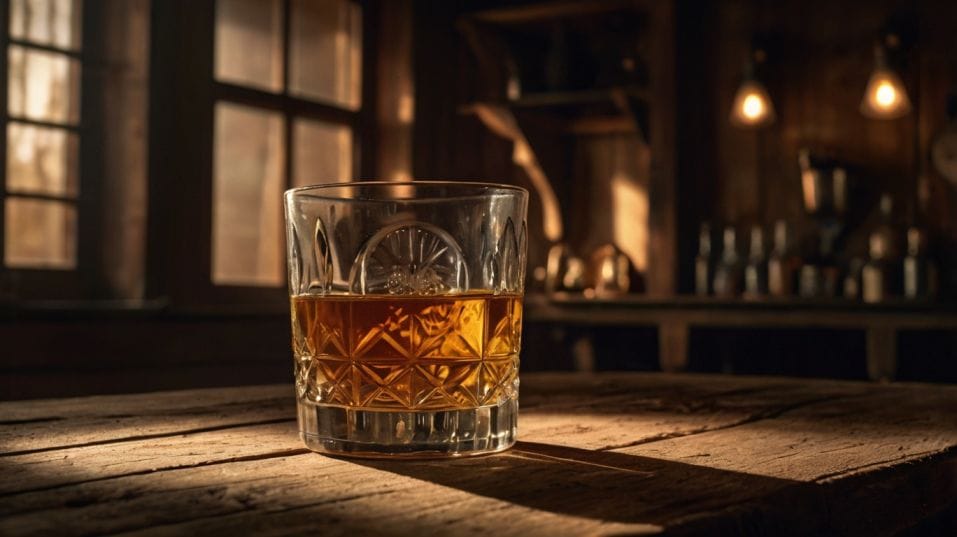Did Cowboys Really Drink Whiskey Like in the Movies?
Think cowboys drank good whiskey? Think again. Learn how to taste, collect, and enjoy whiskey with real confidence—no myths, no costumes.

Think cowboys drank great whiskey? Think again. If you're just starting your whiskey journey, forget the shootouts and dusty saloons.
The truth behind frontier-era whiskey is rough, raw, and nothing like what’s in your glass today. This isn’t about living out a movie scene—it’s about learning how real whiskey works.
Want to taste smarter, collect with purpose, and enjoy every pour like it counts? Step past the myths and into what matters.
The Myth: Whiskey in the Wild West
Let’s break the illusion. The “whiskey” you see cowboys drinking on screen wasn’t the amber-hued, oak-aged spirit you’re exploring today.
It was a different beast entirely. Harsh, unaged, and often adulterated with additives to mask bad distillation or stretch supply—this stuff wasn’t made for sipping. It was made for numbing.
Barrels were shipped in bulk and diluted or doctored on-site by bartenders who weren’t thinking about flavor profiles. They were thinking about stretch, shelf life, and getting it cheap.
A splash of tobacco, burnt sugar, or turpentine wasn’t unheard of. Some “whiskey” wasn’t whiskey at all—just neutral spirits with coloring and marketing.
The point? What cowboys drank was closer to grain alcohol with a PR problem than anything you’d want in your glass today. So if you’re approaching whiskey like a cowboy, fast and loose, you’re missing everything that makes it worth your time.

Real Whiskey Isn’t a Prop
The whiskey you’re learning to appreciate is built differently. It’s not a prop. It’s a craft.
Modern whiskey—whether it’s bourbon, rye, Scotch, or anything in between—is regulated, refined, and intentional. It’s shaped by law, tradition, and decades of technique.
You’re not just drinking history. You’re drinking decisions: what grain to use, how long to age, what kind of oak, what char level, what climate, what proof off the still, what proof into the barrel.
If you want to get the most from every pour, think like a distiller. Forget the costumes. Focus on what matters: time, grain, wood, heat, patience.
Don’t Play Tough—Play Smart
The cowboy gulps his whiskey like it’s a dare. You don’t need to. Sipping slowly isn’t weakness—it’s skill. It’s the only way to actually understand what’s happening in the glass.
Learn the Burn, Then Move Past It
Here’s the truth most beginners miss: you don’t need to pretend to like harsh whiskey to be taken seriously. The real move is learning what balance tastes like.
How sweet, spice, tannin, and alcohol weave together when the distiller gets it right.
You’ll start noticing the burn less—and the flavor more. Maybe it’s toasted grain. Maybe it’s dried fruit, fresh leather, cinnamon oil, or wet oak.
These aren’t fancy notes. They’re real signals your senses are already picking up—you just haven’t learned to name them yet. But you will. If you’re patient. If you stop performing and start tasting.
Taste Is a Muscle. Train It.
You won’t develop a confident palate by chasing hype bottles or mimicking influencers. The best thing you can do is slow down, taste widely, and take mental notes. Don’t just sip. Listen.
Whiskey evolves in the glass. It changes with time and temperature. Add a few drops of water—see what softens, what sharpens.
Try it after food, before food, in different glasses, at different times of day. These aren’t gimmicks. They’re ways to understand how the whiskey performs. How it talks.
If you’re trying to collect, tasting with discipline makes you dangerous. You won’t need the internet to tell you what’s good. You’ll know what’s worth your money and what’s all packaging. That’s real whiskey confidence.
Collection Isn’t a Flex. It’s a Journey.
Every bottle you collect should teach you something. Don’t just grab what’s rare. Grab what’s interesting. Explore different mash bills, regions, finishes.
If you’re serious about collecting, forget the resale value. Focus on value to you—what this bottle adds to your knowledge, your palate, your experience.
That bottle of cask-strength rye? It’ll teach you what grain spice feels like unfiltered. That Scotch aged in sherry wood?
It’ll teach you how finish alters the baseline. That young bourbon that drinks older than it is? It’ll teach you what climate and barrel proof can do. Build a shelf that reflects your taste, not someone else’s rating.
Whiskey Culture Is Bigger Than the Bar
Don’t get stuck thinking whiskey only belongs in a glass at the end of a long day. Whiskey has deep roots in culture, geography, politics, and economy.
Understanding it fully means knowing where it comes from—not just the distillery, but the soil, the people, the laws, the history.
Know the Context. Drink Smarter.
Why does Kentucky bourbon taste different from Texas bourbon? Why does Japanese whiskey lean soft and floral while American rye hits sharp and bold?
This is where the deeper layers live—not in the bottle, but in the context. You want to become someone who doesn’t just know whiskey, but understands it. That’s how your appreciation deepens.
Final Thoughts
Cowboys didn’t drink whiskey like you think—and you shouldn’t either. If you’re serious about tasting well, collecting smart, and drinking with purpose, leave the movie myths behind.
Every pour is a chance to build your palate, expand your understanding, and sharpen your instincts.
Start today. Taste something new. Revisit something old. Ask better questions. Pay closer attention.
Build a whiskey journey that’s grounded in real flavor, not fantasy. Whiskey rewards the curious. So be curious—every time you pour.




